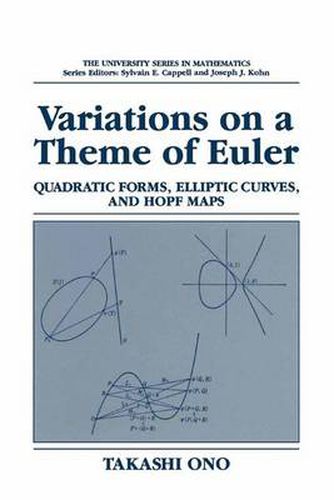Readings Newsletter
Become a Readings Member to make your shopping experience even easier.
Sign in or sign up for free!
You’re not far away from qualifying for FREE standard shipping within Australia
You’ve qualified for FREE standard shipping within Australia
The cart is loading…






This title is printed to order. This book may have been self-published. If so, we cannot guarantee the quality of the content. In the main most books will have gone through the editing process however some may not. We therefore suggest that you be aware of this before ordering this book. If in doubt check either the author or publisher’s details as we are unable to accept any returns unless they are faulty. Please contact us if you have any questions.
The first six chapters and Appendix 1 of this book appeared in Japanese in a book of the same title 15years aga (Jikkyo, Tokyo, 1980).At the request of some people who do not wish to learn Japanese, I decided to rewrite my old work in English. This time, I added a chapter on the arithmetic of quadratic maps (Chapter 7) and Appendix 2, A Short Survey of Subsequent Research on Congruent Numbers, by M. Kida. Some 20 years ago, while rifling through the pages of Selecta Heinz Hopj (Springer, 1964), I noticed a system of three quadratic forms in four variables with coefficientsin Z that yields the map of the 3-sphere to the 2-sphere with the Hopf invariant r =1 (cf. Selecta, p. 52). Immediately I feit that one aspect of classical and modern number theory, including quadratic forms (Pythagoras, Fermat, Euler, and Gauss) and space elliptic curves as intersection of quadratic surfaces (Fibonacci, Fermat, and Euler), could be considered as the number theory of quadratic maps-especially of those maps sending the n-sphere to the m-sphere, i.e., the generalized Hopf maps. Having these in mind, I deliveredseverallectures at The Johns Hopkins University (Topics in Number Theory, 1973-1974, 1975-1976, 1978-1979, and 1979-1980). These lectures necessarily contained the following three basic areas of mathematics: v vi Preface Theta Simple Functions Aigebras Elliptic Curves Number Theory Figure P.l.
$9.00 standard shipping within Australia
FREE standard shipping within Australia for orders over $100.00
Express & International shipping calculated at checkout
This title is printed to order. This book may have been self-published. If so, we cannot guarantee the quality of the content. In the main most books will have gone through the editing process however some may not. We therefore suggest that you be aware of this before ordering this book. If in doubt check either the author or publisher’s details as we are unable to accept any returns unless they are faulty. Please contact us if you have any questions.
The first six chapters and Appendix 1 of this book appeared in Japanese in a book of the same title 15years aga (Jikkyo, Tokyo, 1980).At the request of some people who do not wish to learn Japanese, I decided to rewrite my old work in English. This time, I added a chapter on the arithmetic of quadratic maps (Chapter 7) and Appendix 2, A Short Survey of Subsequent Research on Congruent Numbers, by M. Kida. Some 20 years ago, while rifling through the pages of Selecta Heinz Hopj (Springer, 1964), I noticed a system of three quadratic forms in four variables with coefficientsin Z that yields the map of the 3-sphere to the 2-sphere with the Hopf invariant r =1 (cf. Selecta, p. 52). Immediately I feit that one aspect of classical and modern number theory, including quadratic forms (Pythagoras, Fermat, Euler, and Gauss) and space elliptic curves as intersection of quadratic surfaces (Fibonacci, Fermat, and Euler), could be considered as the number theory of quadratic maps-especially of those maps sending the n-sphere to the m-sphere, i.e., the generalized Hopf maps. Having these in mind, I deliveredseverallectures at The Johns Hopkins University (Topics in Number Theory, 1973-1974, 1975-1976, 1978-1979, and 1979-1980). These lectures necessarily contained the following three basic areas of mathematics: v vi Preface Theta Simple Functions Aigebras Elliptic Curves Number Theory Figure P.l.